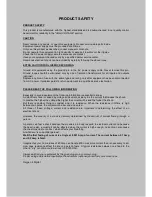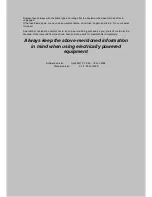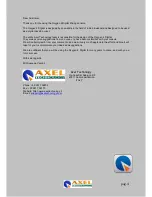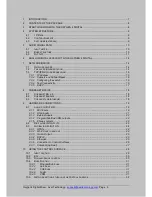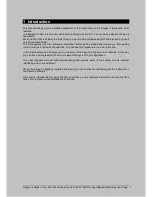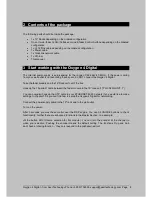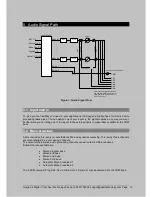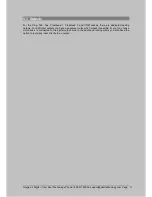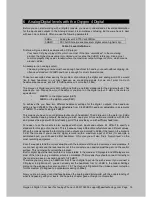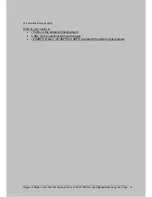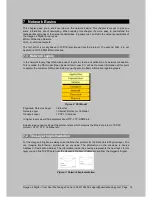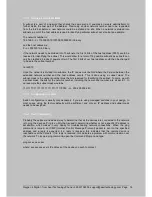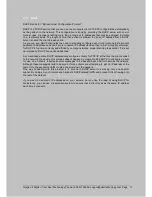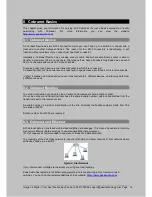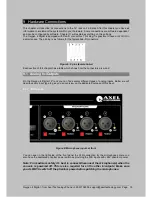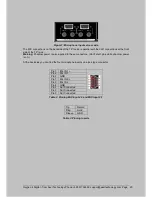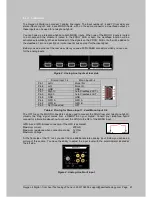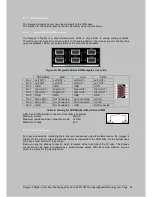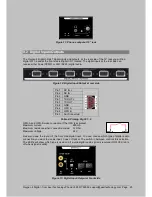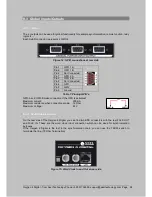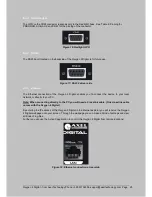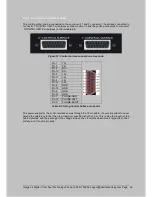
Analog/Digital levels with the Oxygen 4 Digital
6 Analog/Digital levels with the Oxygen 4 Digital
Before you can start working with a (digital) console you need to understand all level standardization
for the inputs and outputs. In the Analog domain it is sometimes confusing. But now we have to deal
with even more formats. Often we use the following parameters:
0 dBu
Analog level of 0.775V at 600Ohm.
0 dBFS
FS= Full Scale (means maximum digital value, higher=clip).
Table 1: Level Definitions
First we will give a simple example with a CD-player:
Your home CD player plays CDs, which are most of the time ‘normalized’. In the mastering
process the highest peak value is monitored and is set as the 0 dBFS reference. Like in most
common players they use a standard where the maximum output voltage is 2Vrms, which means
8 dBu.
An example in an analog system.
The analog-mixing console must have enough headroom to handle your audio without clipping. An
often-used standard of 20dB headroom is enough for most circumstances.
Those two examples show exactly the problem of combining the digital and analog world. We would
like to have headroom in our mixer because we are adding signals, but we don’t want too much
headroom because we ‘eat bits’ (20 dB headroom is more than 3 bits).
The Oxygen 4 Digital supports both AES (and Dolby) and EBU standards for the digital outputs. That
means you can choose how much headroom you want on the digital output. 0 dB on the meter is
equivalent to:
-
20dBFS on the digital output (AES)
-
9dBFS on the digital output (EBU)
To achieve this you have two different headroom settings for the digital outputs. One headroom
setting is fixed 20dBFS. The other is adjustable from 0 to 20dBFS headroom adjustable in increments
of 1dBFS. The default setting is 9dBFS.
This means you have on your digital outputs enough headroom! The 0 dB level on the meter is +6 dBu
on the balanced analog outputs. Because you also need your bit-resolution we interface with 24 bits
and process the signal with 32 bits floating point! This provides you with sufficient headroom.
For ease of use the console is also equipped with cinch inputs and outputs. It’s difficult to specify a
standard for this type of connector. This is because many different manufacturers use different values.
When the console leaves the factory the cinch outputs are trimmed to 0 dBu if the level on the meter is
0 dB. That means if you connect a digital recorder with a maximum input of 2Vrms (for example a
calibrated input) you still have 8 dB of headroom. Of course you will also find a ‘Record level’ on the
most recording equipment.
Even if we understand the current situation with the levels we still have to overcome some problems. If
we connect signals and the level seems not to be correct we can easily adjust the gain on the control
surface. This can instantly correct the problem.
But for digital inputs the level problem is more related to the medium. CD-players and MD-players are
most of the time playing a medium, which is normalized. That means if we should connect it directly to
the console, we see an incoming signal of +20 dB !!!
Therefore you may set-up a ‘headroom trim’ for each digital input via the web server. If you connect a
CD player to digital input 1 you can already set the headroom trim to -20 dB in the Global Settings
dialog on the webpage. See also section 11.5. The Oxygen 4 Digital will then make a level correction
for this medium (if assigned to a module/processing channel).
Now you know how you can interface between the analog and digital world with the understanding of
what is happening with your levels. We hope this chapter gave an insight on this matter.
Oxygen 4 Digital - from Axel Technology Phone +39 051736555, support@axeltechnology.com Page 12
Summary of Contents for Oxygen 4
Page 1: ...Oxygen 4 Digital pag 1...


